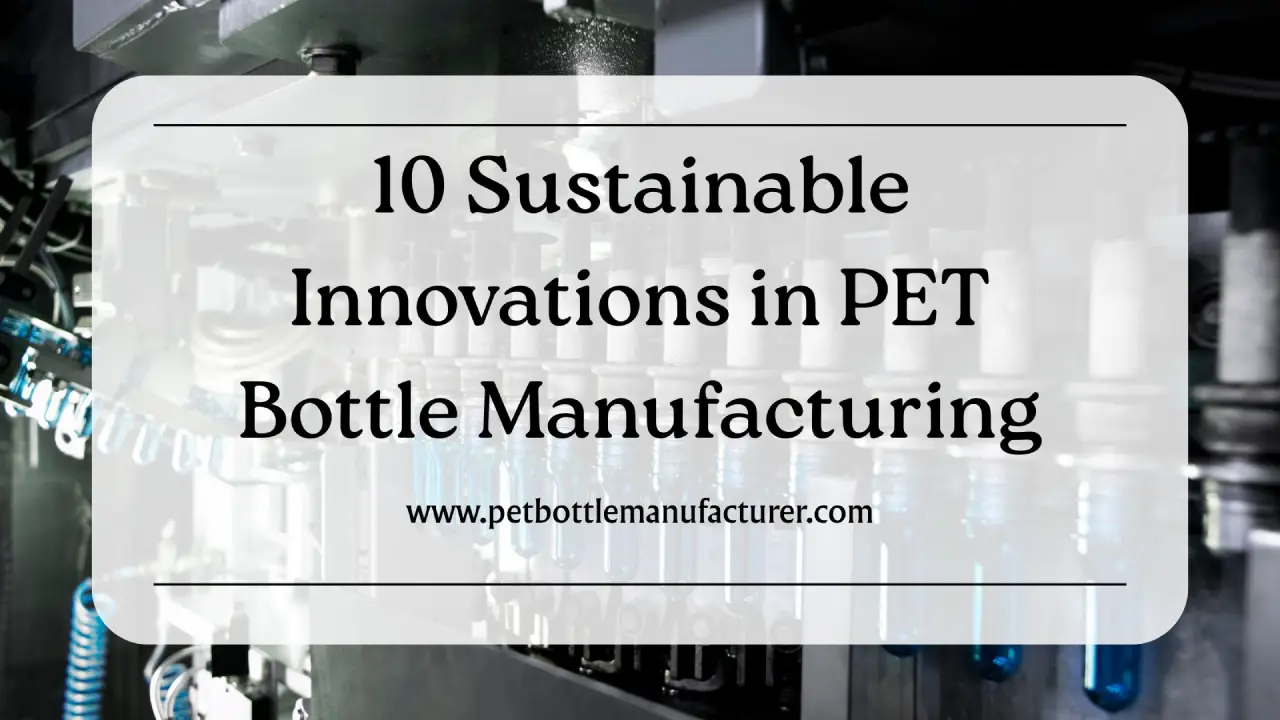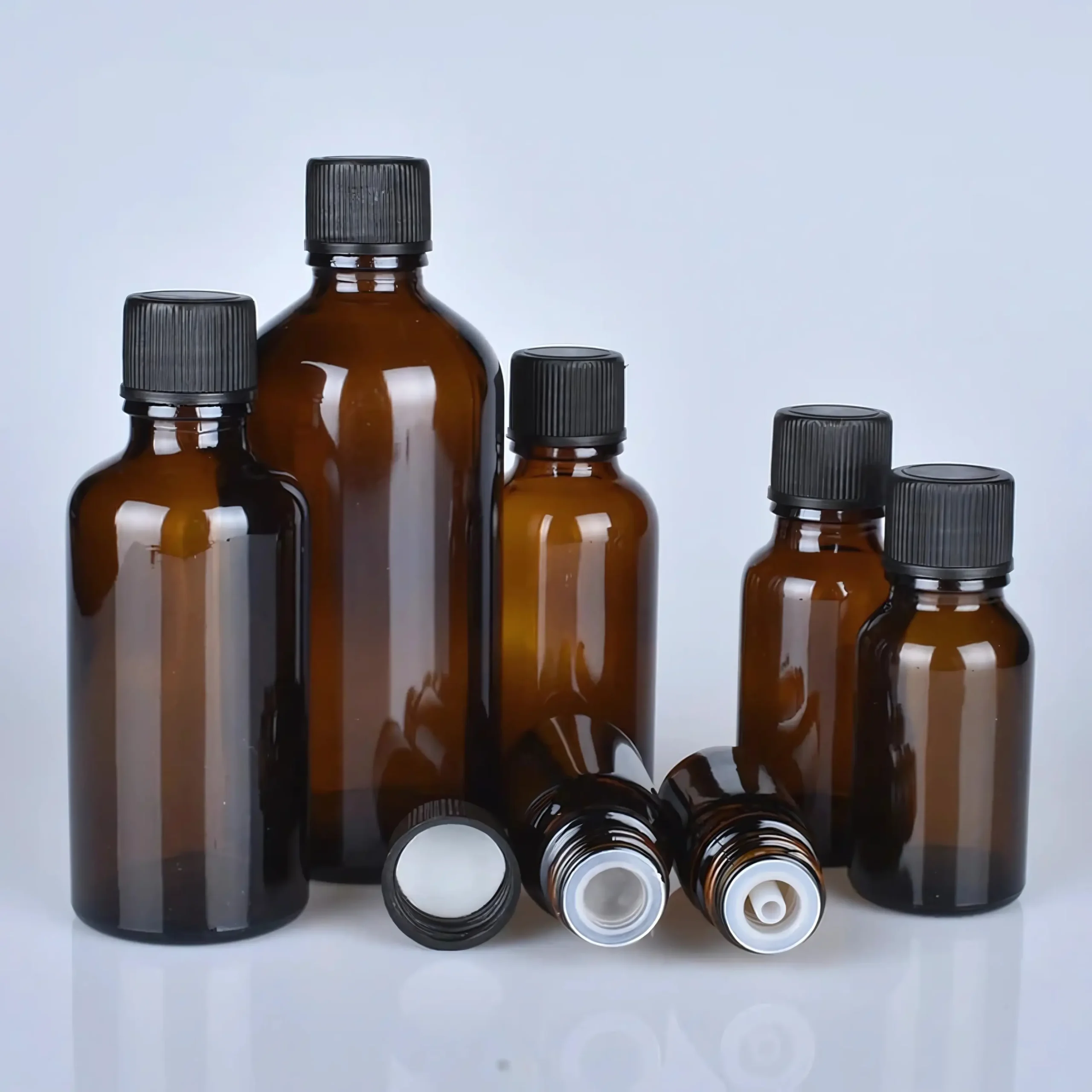10 Sustainable Innovations in PET Bottle Manufacturing

Introduction
The global demand for PET (Polyethylene Terephthalate) bottles continues to rise due to their lightweight, durable, and versatile nature. From beverages and personal care products to industrial liquids, PET bottles are ubiquitous in modern life. However, environmental concerns related to plastic pollution and carbon emissions have led to a pressing need for sustainable manufacturing practices in the PET bottle industry.
Sustainability in PET bottle production is no longer optional—it is essential for compliance with environmental regulations, consumer expectations, and global sustainability goals. Companies that innovate in eco-friendly manufacturing, material optimization, energy efficiency, and recycling not only reduce their environmental footprint but also gain a competitive advantage.
Shree Balaji Enterprises, a leading PET Bottle Manufacturer, is at the forefront of these innovations. By integrating sustainable practices into every stage of production, Shree Balaji Enterprises ensures high-quality bottles while minimizing environmental impact.
This blog explores the top 10 sustainable innovations in PET bottle manufacturing for 2025, providing insights into design, materials, technology, and practices that are transforming the industry.
1. Lightweight Bottle Design
The Need for Lightweighting
Traditional PET bottles often use more material than necessary, increasing production costs, transportation fuel consumption, and carbon emissions. Lightweight bottle design focuses on reducing the amount of PET resin used while maintaining strength, durability, and performance.
Innovations in Design
- Advanced Blow Molding Techniques: Injection stretch blow molding allows thinner walls without compromising structural integrity.
- Optimized Geometry: Computational Fluid Dynamics (CFD) helps design bottle shapes that resist deformation under pressure while using less material.
- Reduced Cap and Label Material: Lighter caps and minimalistic labels further reduce overall plastic use.
Benefits
- Lower production costs and raw material consumption
- Reduced carbon footprint during transport due to lighter bottles
- Enhanced consumer handling and convenience
Example: Shree Balaji Enterprises helped a leading beverage company reduce PET usage by 15% by implementing optimized lightweight bottles, saving thousands of kilograms of plastic annually.
Tips for Implementation
- Partner with a trusted PET Bottle Manufacturer specializing in lightweighting
- Conduct stress tests to ensure thin-walled bottles maintain durability
- Optimize labeling and capping for minimal material use
2. Recycled PET (rPET) Integration
What is rPET?
Recycled PET (rPET) is produced from post-consumer bottles or industrial scrap. It reduces reliance on virgin PET and supports a circular economy, diverting plastic from landfills.
Innovations
- High-Quality rPET Pellets: Advanced purification processes remove impurities to ensure performance comparable to virgin PET.
- Blended Bottles: Mixing rPET with virgin PET balances sustainability and structural integrity.
- Closed-Loop Recycling: Bottles collected, cleaned, and remade into new bottles within the same supply chain.
Benefits
- Reduces environmental pollution and landfill waste
- Supports corporate sustainability initiatives
- Enhances consumer perception of eco-friendly brands
Example: Shree Balaji Enterprises produces bottles with up to 50% rPET content, significantly reducing carbon emissions while maintaining bottle quality.
Implementation Tips
- Conduct quality control to avoid defects in recycled bottles
- Start with blended rPET to test performance before increasing content
- Educate consumers about recycling to maintain supply chain efficiency
3. Bio-Based PET and Biodegradable Additives
Introduction to Bio-PET
Bio-PET is derived partially from renewable resources such as sugarcane ethanol, replacing fossil fuel-based PET. Some bio-PET formulations include biodegradable additives to accelerate decomposition under industrial composting conditions.
Innovations
- Plant-Based PET: Maintains mechanical and thermal properties of conventional PET while reducing fossil fuel use.
- Biodegradable Additives: Allows bottles to break down faster in controlled conditions.
- Hybrid PET Bottles: Combining bio-PET with conventional PET to ensure durability during transition.
Benefits
- Lower greenhouse gas emissions
- Eco-conscious branding and market differentiation
- Compliance with regulatory trends promoting renewable packaging
Example: Beverage brands adopting bio-PET bottles from Shree Balaji Enterprises gained eco-certifications, improving brand reputation.
Implementation Tips
- Evaluate performance of bio-PET under storage and transport conditions
- Consider hybrid solutions initially to balance cost and sustainability
- Partner with certified suppliers for renewable feedstock
4. Energy-Efficient Manufacturing
Reducing Production Energy
PET bottle production is energy-intensive. Sustainable practices focus on minimizing electricity and thermal energy consumption throughout manufacturing.
Techniques
- Optimized Blow Molding Cycles: Shorter, precise heating and cooling cycles reduce energy use.
- Efficient Motors and Compressors: Modern equipment consumes less power without sacrificing output.
- Heat Recovery Systems: Captures waste heat from extrusion or blow molding for reuse.
Benefits
- Reduced electricity bills and carbon emissions
- Improved operational efficiency
- Lower environmental impact per million bottles produced
Example: Shree Balaji Enterprises implemented heat recovery and optimized blow molding cycles, cutting energy consumption by 20% per million bottles.
Implementation Tips
- Invest in energy-efficient machinery and automation
- Monitor energy usage continuously to identify improvement areas
- Train staff in sustainable operating practices
5. Advanced Barrier Technologies
Importance of Barrier Coatings
Certain beverages require protection against oxygen, carbon dioxide, or UV light. Advanced barrier technologies improve shelf life and reduce product wastage.
Innovations
- UV-Blocking Coatings: Protect beverages from sunlight without adding extra layers
- Oxygen Scavenger Films: Extend shelf life and reduce spoilage
- Nano-Coatings: Thin, sustainable layers replace heavier, multi-material solutions
Benefits
- Longer shelf life reduces environmental and financial waste
- Eliminates the need for secondary packaging
- Enhances product quality and consumer trust
Example: Using barrier-enhanced bottles from Shree Balaji Enterprises, beverage companies reduced spoilage by 25%, minimizing waste.
6. Design for Recycling
Enhancing Recyclability
Designing bottles for recycling ensures higher collection and reprocessing efficiency.
Innovations
- Mono-Material Bottles: Avoid mixing plastics to simplify recycling.
- Detachable Caps and Labels: Prevent contamination in recycling streams.
- Color-Coding: Facilitates automated sorting for rPET production.
Benefits
- Increased recycling rates
- Reduced contamination and landfill waste
- Supports global circular economy initiatives
Example: Shree Balaji Enterprises’ mono-material bottles with detachable caps are widely recycled, feeding rPET back into new production.
7. Digital Printing and Label Reduction
Eco-Friendly Labeling
Traditional labels add plastic and adhesives. Digital printing on bottles reduces waste and enhances aesthetics.
Innovations
- Direct-to-Bottle Printing: Eliminates separate plastic labels.
- Minimalist Design: Small logos and QR codes instead of full sleeves.
- Eco-Friendly Inks: Water-based, biodegradable inks.
Benefits
- Less plastic waste
- Lower production and material costs
- Increased consumer perception of sustainability
Example: Digital-printed bottles from Shree Balaji Enterprises reduced plastic sleeve usage by 30%, saving both material and energy.
8. Water-Efficient Production
Minimizing Water Use
PET manufacturing consumes water for cooling and cleaning. Sustainable innovations aim to reuse water and reduce consumption.
Techniques
- Closed-Loop Systems: Recirculates cooling water.
- Efficient Heat Exchangers: Minimize water flow while maintaining temperature control.
- Dry Cleaning Methods: Replace water-based cleaning where feasible.
Benefits
- Lower operational costs
- Reduced wastewater discharge
- Alignment with sustainability certifications
Example: Shree Balaji Enterprises implemented water recycling in production, cutting water consumption by 35% per million bottles.
9. Supply Chain Optimization
Sustainable Logistics
Reducing bottle weight and optimizing transport packaging lowers emissions in distribution.
Innovations
- Stackable Bottle Designs: Maximize pallet efficiency
- Compact Pallets and Packaging: Reduce space and fuel consumption
- Lightweight Caps and Labels: Further decrease transport weight
Benefits
- Reduced carbon footprint in shipping
- Cost savings in transportation
- Improved sustainability reporting
Example: Redesigned bottle pallets by Shree Balaji Enterprises reduced shipping emissions by 18%, supporting clients’ sustainability goals.
10. Circular Economy Initiatives
Closed-Loop Systems
Leading PET manufacturers adopt circular economy models, collecting, recycling, and reusing PET bottles.
Practices
- Collection Programs: Encourage post-consumer returns
- Recycling Partnerships: Collaborate with recyclers for rPET production
- In-House Recycling: Use production scrap for new bottles
Benefits
- Reduces virgin PET usage
- Minimizes environmental impact
- Enhances brand image and compliance with regulations
Example: Shree Balaji Enterprises’ participation in nationwide collection programs feeds rPET into new production lines, achieving up to 50% recycled content.
Conclusion
Sustainable PET bottle manufacturing is vital for environmental, operational, and brand success. Innovations such as:
- Lightweight bottle design
- rPET integration
- Bio-based PET
- Energy-efficient manufacturing
- Advanced barrier technologies
- Design for recycling
- Digital printing and label reduction
- Water-efficient production
- Supply chain optimization
- Circular economy initiatives
…are transforming the industry.
By adopting these innovations, Shree Balaji Enterprises, a trusted PET Bottle Manufacturer, delivers bottles that are durable, eco-friendly, and cost-effective, helping clients achieve sustainability goals, regulatory compliance, and market differentiation.

